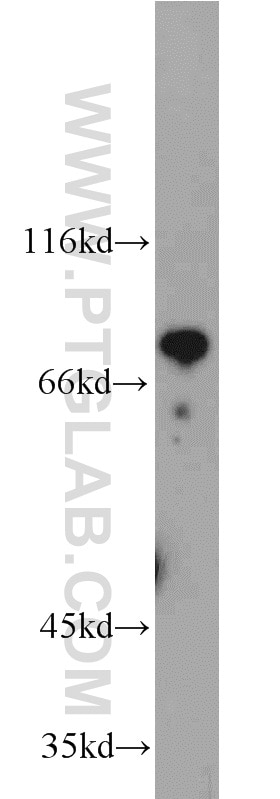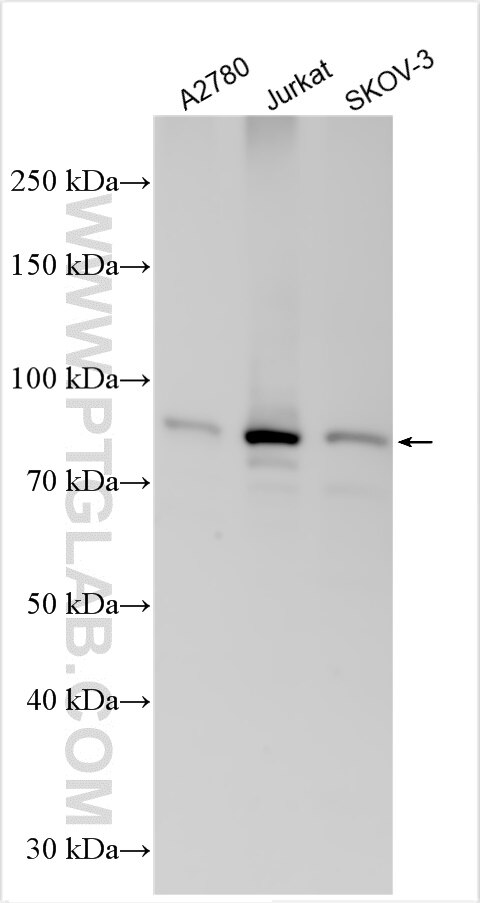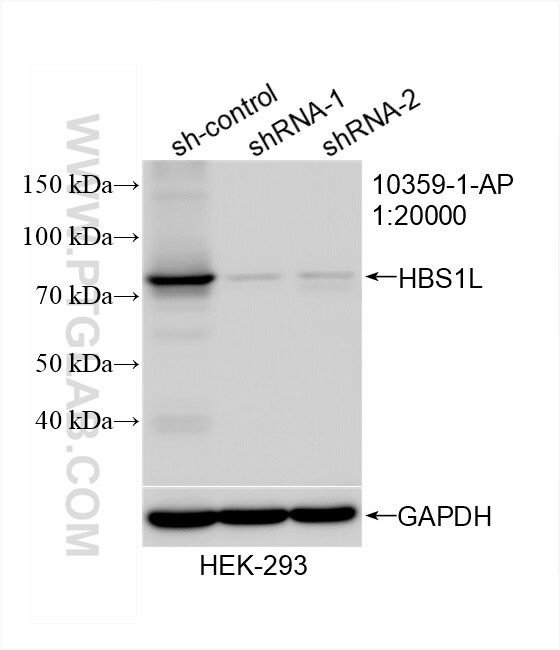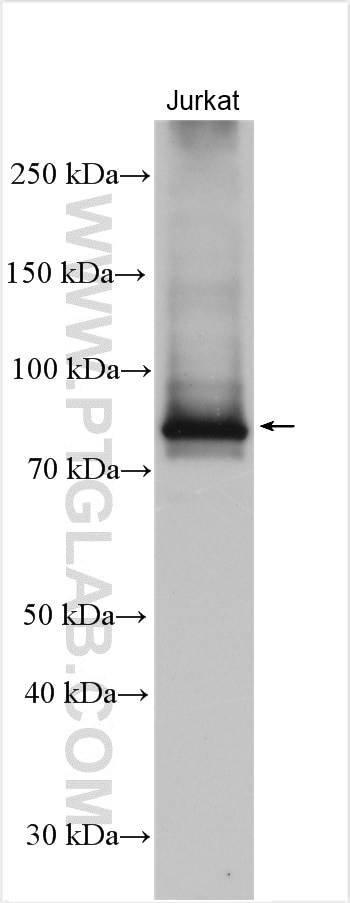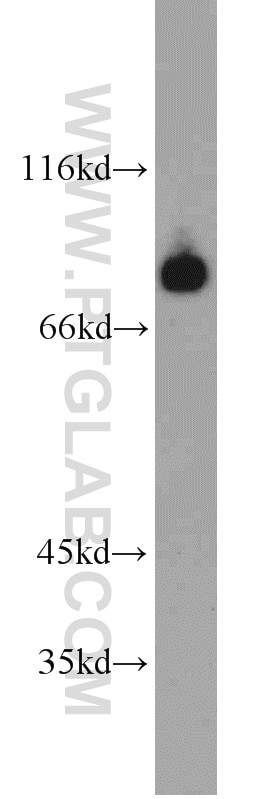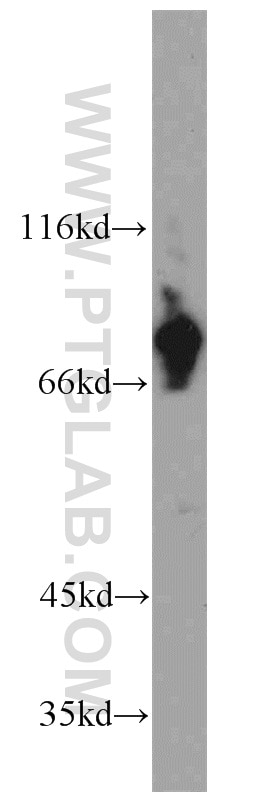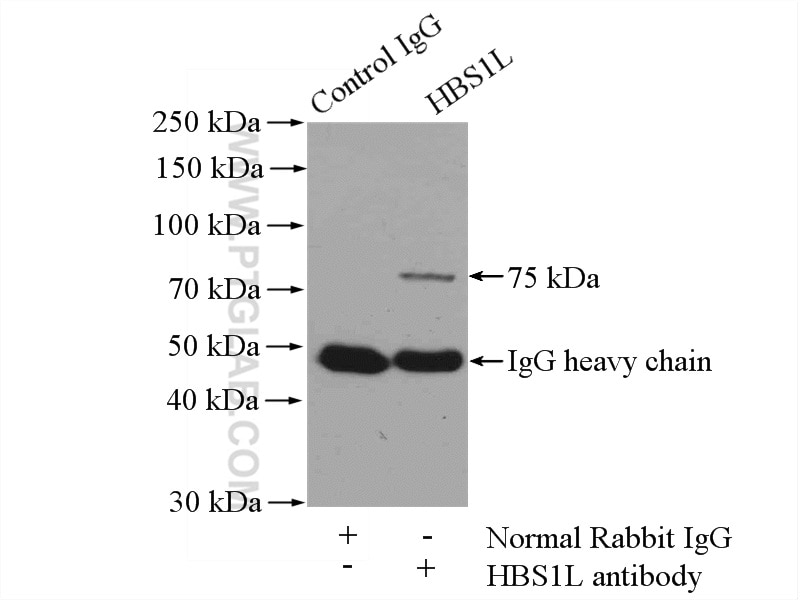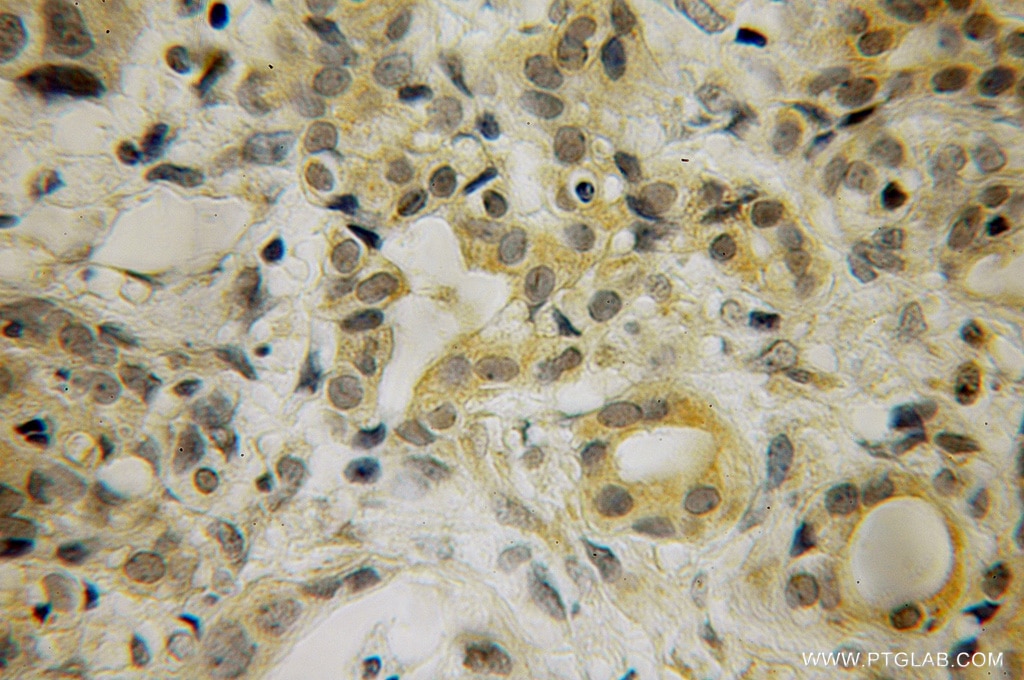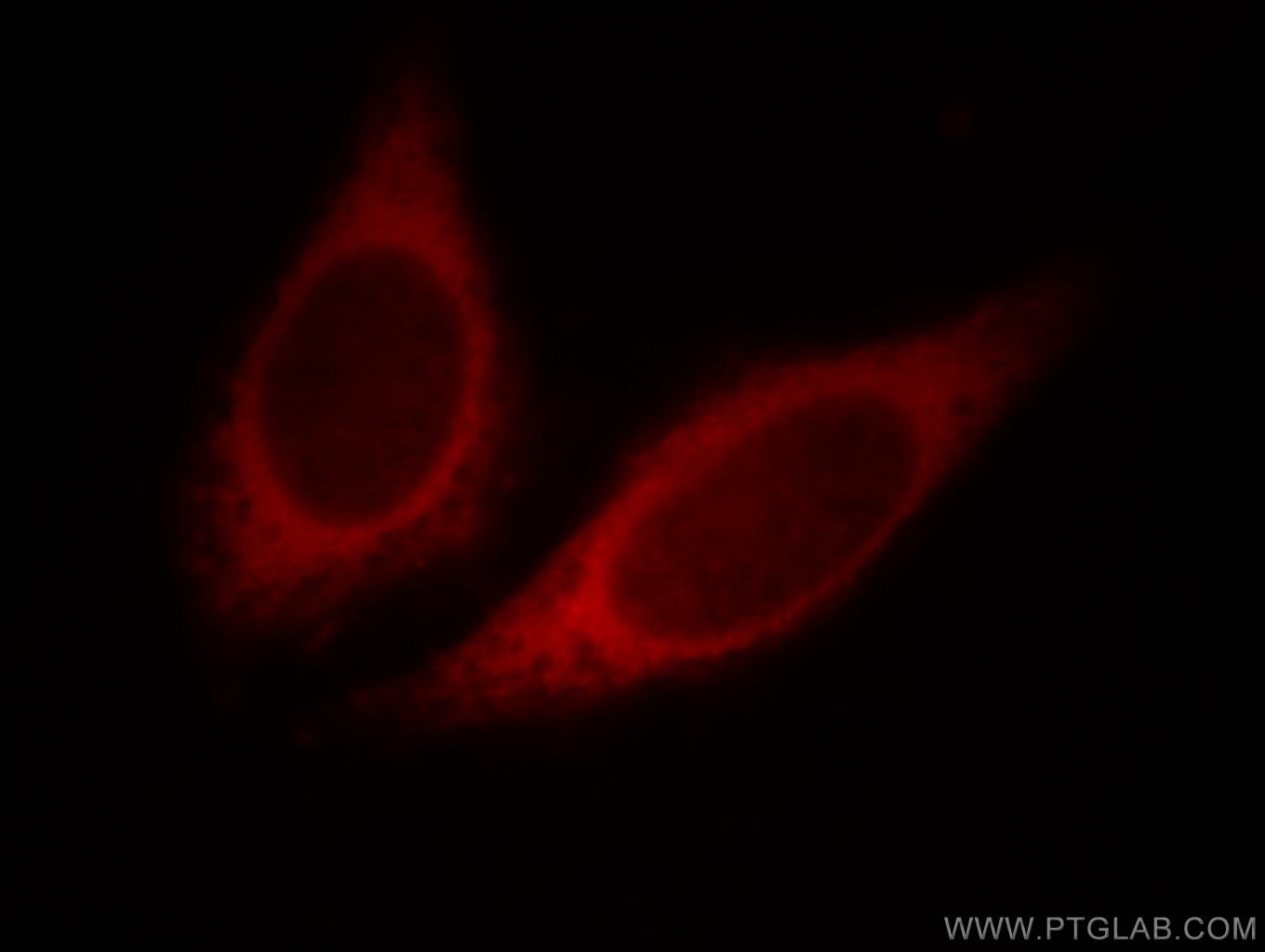- Phare
- Validé par KD/KO
Anticorps Polyclonal de lapin anti-HBS1L
HBS1L Polyclonal Antibody for WB, IP, IF, IHC, ELISA
Hôte / Isotype
Lapin / IgG
Réactivité testée
Humain, souris
Applications
WB, IHC, IF/ICC, IP, ELISA
Conjugaison
Non conjugué
N° de cat : 10359-1-AP
Synonymes
Galerie de données de validation
Applications testées
| Résultats positifs en WB | cellules Jurkat, cellules A2780, cellules HEK-293, cellules SKOV-3, tissu cérébral de souris |
| Résultats positifs en IP | tissu cérébral de souris |
| Résultats positifs en IHC | tissu de cancer du pancréas humain il est suggéré de démasquer l'antigène avec un tampon de TE buffer pH 9.0; (*) À défaut, 'le démasquage de l'antigène peut être 'effectué avec un tampon citrate pH 6,0. |
| Résultats positifs en IF/ICC | cellules HepG2 |
Dilution recommandée
| Application | Dilution |
|---|---|
| Western Blot (WB) | WB : 1:5000-1:50000 |
| Immunoprécipitation (IP) | IP : 0.5-4.0 ug for 1.0-3.0 mg of total protein lysate |
| Immunohistochimie (IHC) | IHC : 1:20-1:200 |
| Immunofluorescence (IF)/ICC | IF/ICC : 1:10-1:100 |
| It is recommended that this reagent should be titrated in each testing system to obtain optimal results. | |
| Sample-dependent, check data in validation data gallery | |
Applications publiées
| KD/KO | See 3 publications below |
| WB | See 7 publications below |
Informations sur le produit
10359-1-AP cible HBS1L dans les applications de WB, IHC, IF/ICC, IP, ELISA et montre une réactivité avec des échantillons Humain, souris
| Réactivité | Humain, souris |
| Réactivité citée | Humain, souris |
| Hôte / Isotype | Lapin / IgG |
| Clonalité | Polyclonal |
| Type | Anticorps |
| Immunogène | HBS1L Protéine recombinante Ag0388 |
| Nom complet | HBS1-like (S. cerevisiae) |
| Masse moléculaire calculée | 75 kDa |
| Poids moléculaire observé | 75 kDa |
| Numéro d’acquisition GenBank | BC001465 |
| Symbole du gène | HBS1L |
| Identification du gène (NCBI) | 10767 |
| Conjugaison | Non conjugué |
| Forme | Liquide |
| Méthode de purification | Purification par affinité contre l'antigène |
| Tampon de stockage | PBS avec azoture de sodium à 0,02 % et glycérol à 50 % pH 7,3 |
| Conditions de stockage | Stocker à -20°C. Stable pendant un an après l'expédition. L'aliquotage n'est pas nécessaire pour le stockage à -20oC Les 20ul contiennent 0,1% de BSA. |
Informations générales
HBS1L (HBS1-like), also known as EF-1a or ERFS, is a 684 amino acid protein that belongs to the GTP-binding elongation factor family and exists as multiple alternatively spliced isoforms. Expressed in kidney, brain, heart, placenta, liver, muscle and pancreas, HSB1L is thought to play a role in controlling fetal hemoglobin levels, specifically influencing platelet, monocyte and erythrocyte hemoglobin content. The gene encoding HBS1L maps to a locus on human chromosome 6 that is associated with sickle cell anemia and beta-thalassemia, suggesting a role for HBS1L in the pathogenesis of blood disorders.This antibody specifically recognizes the 75kd human HBS1L protein.
Protocole
| Product Specific Protocols | |
|---|---|
| WB protocol for HBS1L antibody 10359-1-AP | Download protocol |
| IHC protocol for HBS1L antibody 10359-1-AP | Download protocol |
| IF protocol for HBS1L antibody 10359-1-AP | Download protocol |
| IP protocol for HBS1L antibody 10359-1-AP | Download protocol |
| Standard Protocols | |
|---|---|
| Click here to view our Standard Protocols |
Publications
| Species | Application | Title |
|---|---|---|
Mol Cell Deep sequencing shows multiple oligouridylations are required for 3' to 5' degradation of histone mRNAs on polyribosomes. | ||
Elife Defects in translation-dependent quality control pathways lead to convergent molecular and neurodevelopmental pathology. | ||
Biochem J Eukaryotic elongation factor 2 kinase regulates the cold stress response by slowing translation elongation. | ||
J Biol Chem RNA exosome complex regulates stability of Hepatitis B Virus's X-mRNA transcript in a Non-Stop mediated (NSD) RNA quality control mechanism.
| ||
PLoS Genet Mammalian Hbs1L deficiency causes congenital anomalies and developmental delay associated with Pelota depletion and 80S monosome accumulation.
| ||
Immunity Ribosome-rescuer PELO catalyzes the oligomeric assembly of NOD-like receptor family proteins via activating their ATPase enzymatic activity
|
